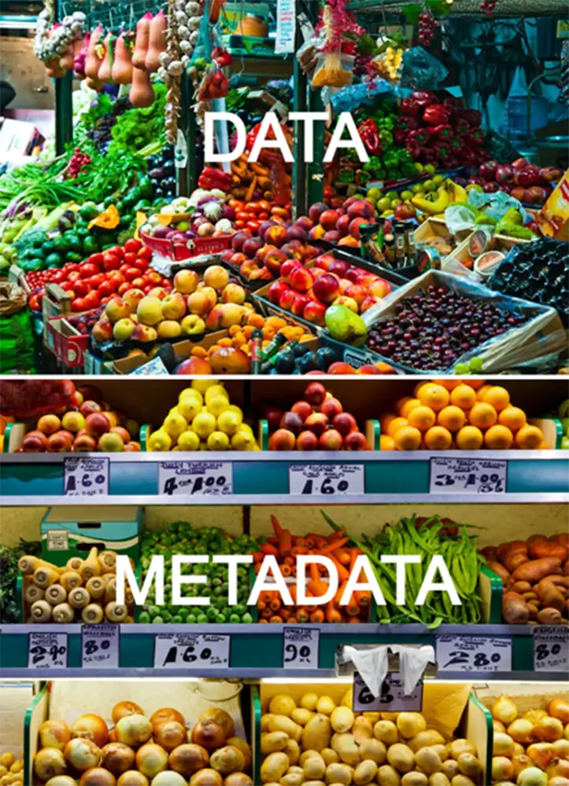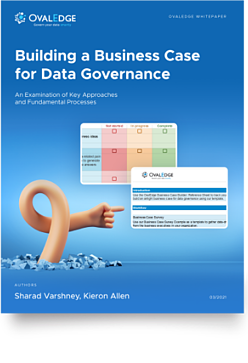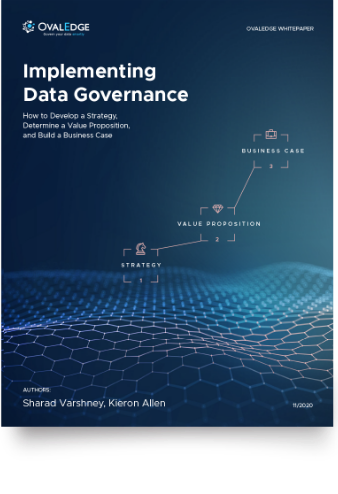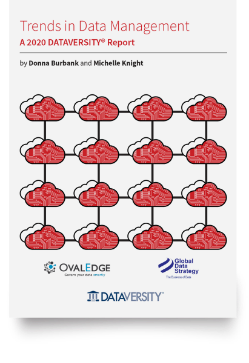Table of Contents

Data Governance & Metadata Management: Better Together
Metadata management is a critical element of data governance that enables users to derive value from the data they have at their disposal. Beyond this, it enables business users to classify data sets and flag up sensitive or confidential information so as not to breach any existing privacy regulations.
Traditionally, metadata management was used to organize and classify data for compliance reasons, but in today's world, these classifications can also be used in access management, data discovery, and data quality management too.
By the time you finish reading this article, you’ll be equipped with knowledge of how best to manage your metadata and turn it into valuable business insights.
Need help convincing stakeholders of the importance of data governance? Download our free Data Governance Business Case Builder
What’s Metadata and Metadata Management?
Metadata is essentially data about data. Metadata provides users with the information they need to put the data they are using into context, revealing the who, what, where, why, when, and how of a data asset. In general, metadata today is associated with web assets, but physical and other electronic data can have metadata associated with them too.
Common metadata elements in data include title, description, tags, categories, author, modification dates, lineage, and more. These elements provide crucial information about how data was created, how it was altered, who altered it, and what it can be used for. The easiest way to separate data from a data governance perspective is to split it into two categories, business metadata, and technical metadata.
Business metadata includes elements that indicate a certain business value and provide a broader context for business users. For example, this could include information on confidentiality, a clear definition of the term, or the class the term belongs to.
Technical metadata is focused on data transformation, structure, storage, size, and other related elements. For example, this could include information regarding the structure of the column or table that it is stored in, the name of the table, the size of the data asset, or the data definition language.
The first indexing systems, such as the paper referencing systems that used to exist in libraries used physical management systems. Later, search engines like Yahoo! and Google used electronic searches to find web pages.
Today, enterprise metadata management (EMM) can be completed manually or by using an automated system. Either way, metadata management should have the same outcome—to be able to answer common questions.

Related: What is Active Metadata Management? Definition & Benefits
Metadata in Data Governance
Metadata management is a key component of data governance because it addresses many of the core issues that governance initiatives are designed to combat. These include a lack of standardization, ambiguous data ownership, undefined data quality rules, data security concerns, compliance concerns, an absence of lineage, communication issues, categorization problems, and more.
When managed correctly, metadata can provide solutions that data teams can employ to tackle these issues. For example, metadata can be used to mitigate risk because it enables organizations to categorize data so users can determine whether the information is sensitive or confidential.
Identifying data owners through metadata enables data teams to assign responsibility to different data sets, and metadata is critical for creating a business glossary and standardizing terms and definitions too.
It enables data teams to track lineage and in turn clean and improve the quality of data. Essentially, for data governance to work successfully, you need to manage your metadata well.
Related: A Step-by-Step Guide to Metadata Management
How to create an Enterprise Metadata Management Strategy within a Data Governance Framework?
Metadata management can’t work as a standalone strategy, because it has to be developed within the context of a data governance framework. When created and rolled out correctly, a data governance framework will integrate users with core data governance processes, make data-driven innovation part of company culture, and enable collaboration.
Fail to define and execute a data governance framework before you set out to develop a plan for your metadata, and you’ll struggle to get your strategy off the ground.
1. How to Build a Data Governance Framework?
As we mentioned earlier in this article, building a successful data governance framework is about integrating data users with data processes. The ultimate goal is to create a harmonious link between these two critical business assets and drive data-centric growth.
The first step should be to find and document all of the data that exists in your organization. After this, you need to identify the data owners and set up a group to manage the data governance process and a governance committee to ensure all the proper stakeholders are involved. Ensuring transparency and unbiased oversight is crucial at every stage of your data governance initiative.
A framework should include several key elements that make it easy for users to access data, standardize data terms and definitions, promote and facilitate data literacy, and improve the quality of data assets.
Related: Data Governance and Data Quality Working Together
Collectively, every element of your data governance framework will foster a data-driven culture that encourages collaboration and the use of data to innovate. And, the key to creating a data governance framework such as this is patience and planning.
Don’t try to implement data governance initiatives across your organization in one hit. It won’t work and will likely lead to failure. Instead, focus on the areas of your businesses that would benefit most from data-driven innovation and use this as a starting point for your data governance strategy.
2. How to Design a Compatible Metadata Management Strategy?
Once you have established a comprehensive data governance framework, you need to design a metadata management strategy to maximize the value of your data. As with your data governance framework, this strategy will be unique to your organization, but you should follow the same general procedure we'll lay out in this blog post.
The first step is to create and adapt a metadata model that fits with the purpose and focus of your organization. There are several existing models and frameworks available, but there is no one-size-fits-all approach. The process of developing a metadata model will be overseen by a data architect who will decide which data will achieve which business outcome and structure the model accordingly.
The next stage is to appoint a metadata manager. They will be responsible for ensuring that the initiatives you develop and the processes you design will be carried out correctly. They must have a great deal of technical expertise to be able to commit to this role effectively so think about hiring a well-qualified candidate instead of assigning the role to an existing team member.
Not all metadata is the same, so another important part of any metadata management strategy is to separate and categorize metadata by type.
Another key area of focus is to create access, sharing, and governance policies for the metadata in your organization. Once these processes are in place, you can begin to use your metadata to achieve the most from your data governance initiative.
Related: Building an Effective Data Governance Framework
What you should do now
|





